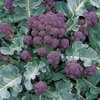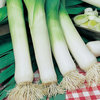Product Categories Vegetable Seeds D-P Kale Nero Di Toscana Borecole Curly Kale Veggie Seeds
Nero Di Toscana Borecole Curly Kale Veggie Seeds
Product no.: SEEDV006
In stock
Delivery period: 1 working days
Accessories
| Product | Note | Status | Price | |
|---|---|---|---|---|
|
Customers who bought this item also bought: |
|
£1.25 * | |
|
You may want to also consider this item: |
|
£0.77 * | |
|
Other items you may also want to consider: |
|
£0.89 * | |
|
* Prices plus VAT, plus delivery
Display accessory details
|
||||
We also recommend
|
Customers who bought this item also bought:
|
* Prices plus VAT, plus delivery
Customers who bought this product also bought
|
Carrot Rainbow Blend 400 Vegetable Seeds
from
£0.97
*
|
Kale Scarlet Borecole Vegetable/Fruit Seeds
from
£1.06
*
|
|
|
|
|
* Prices plus VAT, plus delivery
Browse these categories as well: Kale, Cabbage














 Komatsuna Comred F1 Babyleaf Mustard Spinach
Komatsuna Comred F1 Babyleaf Mustard Spinach KohlRabi Giant Superschmelz Vegetable Seeds
KohlRabi Giant Superschmelz Vegetable Seeds Lettuce Tuscan Salad Mix 740 Vegetable Seeds
Lettuce Tuscan Salad Mix 740 Vegetable Seeds



